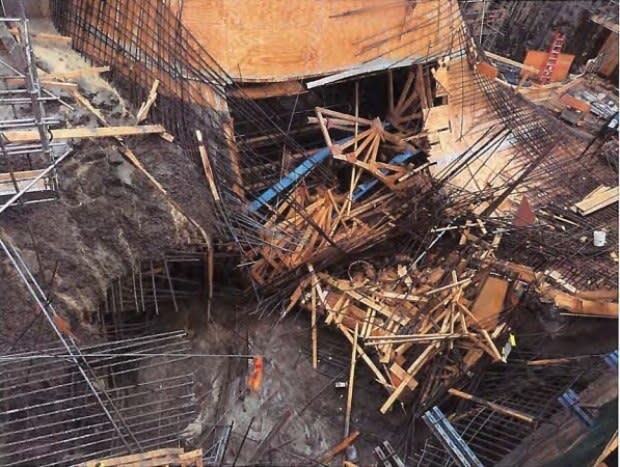Astaldi issued maximum fine, found guilty of 'professional incompetence' for Muskrat Falls collapse
The company overseeing construction of the Muskrat Falls powerhouse during a formwork collapse four years ago that left five workers immersed in wet concrete did not have the proper engineering permits to carry out the work, a professional review has found.
Astaldi Canada Inc. also allowed unqualified personnel to review designs and carry out inspections, and fell short in its responsibility in areas such as quality control, design, workmanship and construction.
Those were just some of the troubling findings of an adjudication tribunal against Astaldi by the Professional Engineers and Geoscientists of Newfoundland and Labrador (PEGNL).
The tribunal's findings, which were released late last month, mark what is likely the final chapter in an incident that shone a spotlight on a project that was already spiralling out of control.
The formwork collapse has also come to symbolize a boondoggle that is billions of dollars over budget and years behind schedule, and which threatens to send electricity rates into the stratosphere and further cripple the province's already fragile finances.
Held together with rotted wood
Five workers were standing on the wooden formwork for draft tube No. 2 in May 2016 as 500 cubic metres — the equivalent to 70 mixer trucks filled with concrete — was being poured.
The formwork, according to expert reports, was poorly designed and held together in places with rotted wood. As a result, the large structure collapsed near the end of the pour, sending the workers into a dangerous mixture of wet concrete, splintered wood and steel rebar.
"I think people felt fortunate that nobody was seriously injured," Janet Bradshow, CEO and registrar for PEGNL, said Wednesday about the collapse.
One worker was completely submerged.
"There were quite a few deficiencies, which I would view as surprising," added Bradshaw.
Three other draft tubes were completed without incident.
'We were very disappointed'
Both Astaldi and Nalcor, the province's Crown energy corporation, hired outside experts to investigate the collapse, and provincial occupational health and safety staff ordered that work be stopped.
After reviewing those independent reports, PEGNL initiated its own probe, and determined that Astaldi had a permit to carry out civil engineering work in the province, but not structural engineering.

"We were very disappointed that despite Astaldi knowing that a permit to practice structural was a requirement, that they went ahead and did the work without getting one," Bradshaw said.
It's the second tribunal ruling into the collapse.
A year ago, Ontario engineer Peter Liu, whom Astaldi hired to oversee the draft tube project, was stripped of his right to practise engineering in Newfoundland and Labrador for what was deemed by a tribunal as "professional incompetence" and "did not have the necessary qualifications" to carry out his senior role.
The second tribunal report came to the same conclusion, and ruled that the company demonstrated "professional incompetence" with the formwork.
Company given top fine
Meanwhile, Astaldi pleaded guilty to the allegations, and must pay the maximum fine of $25,000, and half the cost of the tribunal, up to $5,000.
The company will also face some tough scrutiny if it ever wishes to do work in the province in the future. It will be required to submit a document to PEGNL that details how it has improved its work practices, and will be subjected to a quality assurance audit.
But such a scenario is very unlikely. Nalcor evicted Astaldi from the project in late 2018 before its scope of work was complete, and its Italian parent company faces a financial crisis.
Both sides are also locked in a long-running arbitration, with Astaldi seeking up to $500 million from Nalcor, with arbitration hearings scheduled for October.
Bradshaw said if Astaldi had provided the proper oversight, it's very likely that the deficiencies that led to the collapse would have been detected.
"One of the reports described it as a Swiss cheese model, where … many things went wrong. Any one of those things probably would not have caused it. But the combination of all of them is what made it happen," she said.
PEGNL is the licensing body for engineers and geoscientists in the province, representing more than 5,000 members and and 600 companies.
Not all of those are located in the province, but in order to work in Newfoundland and Labrador, those individuals and companies have to be licensed by PEGNL.
Read more from CBC Newfoundland and Labrador

